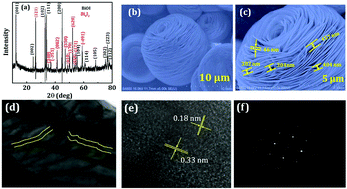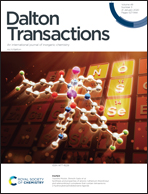Chemically grown bismuth-oxy-iodide (BiOI/Bi9I2) nanostructure for high performance battery-type supercapacitor electrodes†
Abstract
A dual phase bismuth oxyiodide (BiOI/Bi9I2) nanostructure battery type supercapacitor electrode is synthesized using chemical bath deposition (CBD) and the capacitance and energy/power density (ED/PD) reported. The supercapacitor electrode BiOI/Bi9I2 exhibited a specific capacitance of 515.5 F g−1 (capacity value 143 mA h g−1) at a current density of 2 A g−1, with 80% of the original capacitance retained, even at a high current density of 4 A g−1 over 5000 cycles. A pouch-type symmetric supercapacitor (PSS) device was created, based on BiOI/Bi9I2//BiOI/Bi9I2 electrodes (acting as anode and cathode electrodes) with 6 M KOH as the aqueous electrolyte and with an extended voltage up to 1.5 V. The ED value was 38.2 W h kg−1 at a current density of 2 A g−1, and the PD was 2280.4 W·kg−1. Three PSS type BiOI/Bi9I2//BiOI/Bi9I2 devices were connected in series and used to illuminate a red LED for 20 min with full brightness, confirming potential use as an energy storage device. The above summarized results indicate that BiOI/Bi9I2//BiOI/Bi9I2 could be a potential electrode for battery type supercapacitor applications.



 Please wait while we load your content...
Please wait while we load your content...